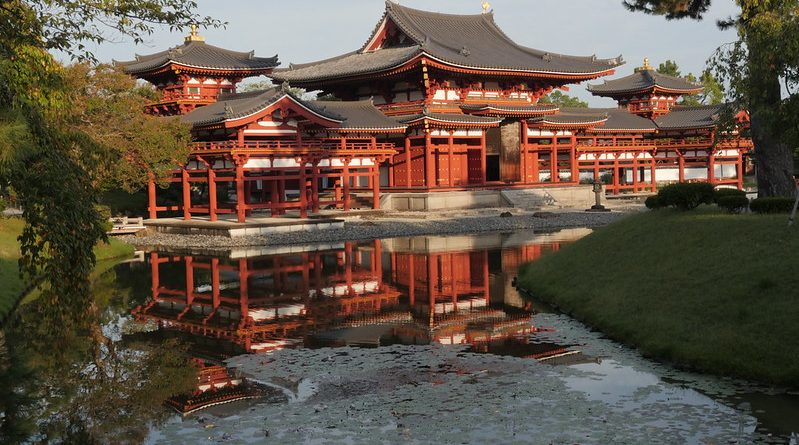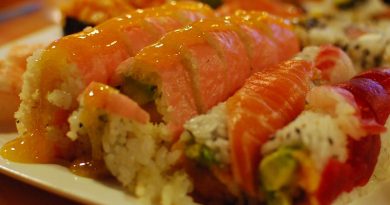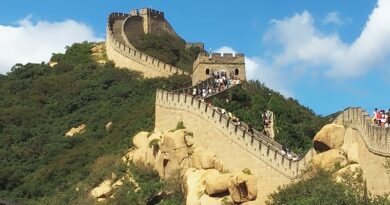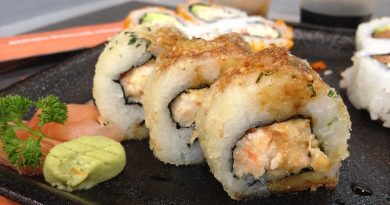Empire Builders Japan Backgrounder
| JOURNEY GUIDE | |
| 1. HIGHLIGHTS | |
| 1. Todai-ji Temple, Nara (752 AD)
The main hall of this most magnificent of Japan’s earliest Buddhist temples houses an enormous Buddha, and was the world’s largest wooden building for nearly 1000 years after its construction.
2. Heian Shrine, Kyoto (794 AD, rebuilt 1895) Dedicated to the first and last of the more than 50 Japanese Emperors who ruled from Kyoto, the main hall of this beautiful Shinto shrine is a replica of the original Heian Palace, from where Kyoto’s first Emperor ruled.
3. Byodo-in Temple, Uji (1053) The main Phoenix Hall, an exquisite UNESCO World Heritage site, is one of Japan’s most remarkable and best-loved buildings. Depicted on Japan’s 10 yen coin, its appearance is said to resemble a phoenix in flight, the bird which symbolises rebirth and reincarnation.
4. Tsurugaoka Hachimangu Shrine, Kamakura (1192) Built by Japan’s first Shogun, or military leader, this historic shrine is dedicated to the Shinto god of war. Every year ancient ‘Yabusame’ ritual archery is performed here, dating back to the first Shogun’s demand that his Samurai warriors should be expert archers.
5. Himeji Castle (1609) Built for one of Japan’s many feudal warlords, it was expertly designed to be virtually impregnable against attack, and is today renowned as Japan’s most spectacular castle.
6. Nikko Toshogu Shrine (1617) Perhaps the most elaborate and splendid of all Japanese shrines, it was created as a mausoleum to honour Japan’s most powerful and famous Shogun, Ieyasu Tokugawa, who unified and pacified the country after centuries of warfare.
7. Dejima Island, Nagasaki (1630s – 1850s) The Tokugawa shogunate imposed a period of strict national isolation for nearly 250 years, forbidding foreigners to enter Japan, except at this tiny island in Nagasaki bay, where a handful of European traders were allowed to operate.
8. Marunouchi District, Tokyo (1890s) After the ‘Meiji Restoration’ in 1868 finally overthrew the feudal Tokugawa shogunate, this area of Tokyo adjacent to the Imperial Palace was utterly transformed. Once home to the vast mansions of Japan’s feudal lords, it became Japan’s first modern business district.
9. Hiroshima Atomic Bomb Dome (1945) After rapidly modernising and militarising in the early C20th, Japan emulated the previous actions of Western powers by attempting to create a vast Asian empire through warfare. By 1945 Japan’s aggression was utterly defeated, forced into unconditional surrender by the horrifying effects of the atomic bombs that were dropped on Hiroshima and Nagasaki.
10. Tokyo Skytree Tower (2012) Rising phoenix-like out of the ashes of war, remarkably within just a few decades Japan was able to become one of the world’s most successful developed modern economies. At over 2000 feet high, the world’s tallest communication tower in Tokyo is a prime symbol of the extraordinary transformation of Japan over the past three quarters of a century since World War Two.
|
|
| 2. CLIMATE: | |
| When To Go:
The best time to visit Japan as far as the climate is concerned is either in the spring (April/May) or autumn (October/November), but since these are the most popular times of year, accommodation needs to be booked well in advance and prices are likely to be higher than off-season.
|
|
| 3. TRAVEL: | |
| Getting There: International/domestic travel by air, sea, road (max. 100 words)
Tokyo and Osaka have major international airports.
|
|
| 4. TOP TENS | |
| Must See and Dos – e.g. attractions or activities along the way(max. 10)
1. Todai-ji Temple, Nara 2. Heian Shrine, Kyoto 3. Byodo-in Temple, Uji, near Kyoto 4. Tsurugaoka Hachimangu Shrine, Kamakura 5. Himeji Castle
|
6. Nikko Toshogu Shrine 7. Dejima Island, Nagasaki 8. Marunouchi District, Tokyo 9. Hiroshima Atomic Bomb Dome 10. Tokyo Skytree Tower |
| 5. SLEEP | |
| List any hotels, guesthouses, hostels, B&Bs featured or stayed in along the route:
1. Sunshine City Prince Hotel, Ikebukuro, Tokyo www.princehotels.com/sunshine 2. ANA Crowne Plaza Nagasaki Glover Hill www.ihg.com 3. Hotel Granvia, Hiroshima www.hgh.co.jp/english 4. Nikko Hotel, Himeji www.okura-nikko.com
|
|
| 6. USEFUL WEBSITES | |
| Websites used to research show – include tourist office, museums, galleries, iconic buildings etc.
|
6. www.japan.travel
|
| 7. USEFUL BOOKS | |
| List any books you used to research/prepare show
1. Lonely Planet Japan 2. Rough Guide Japan 3. Kyoto: City of Zen
|
|




